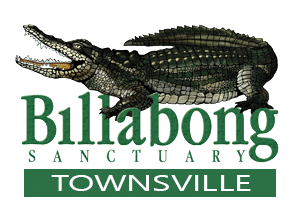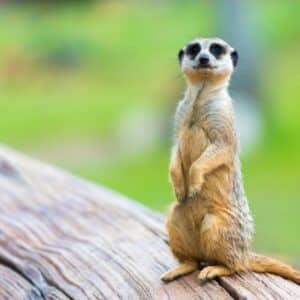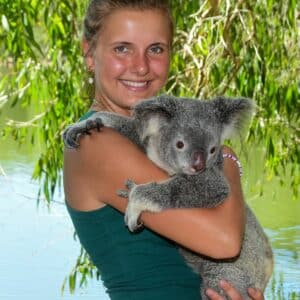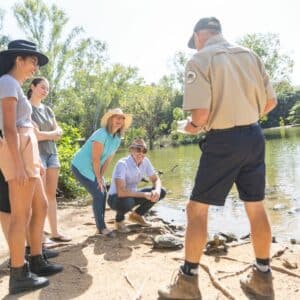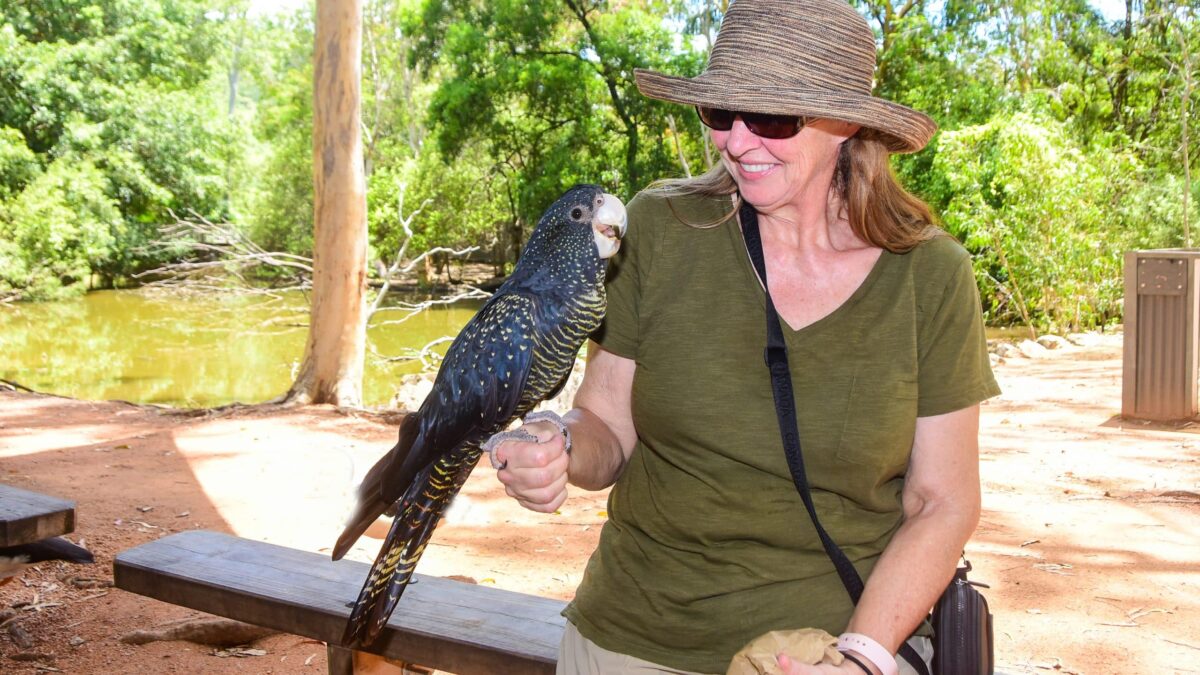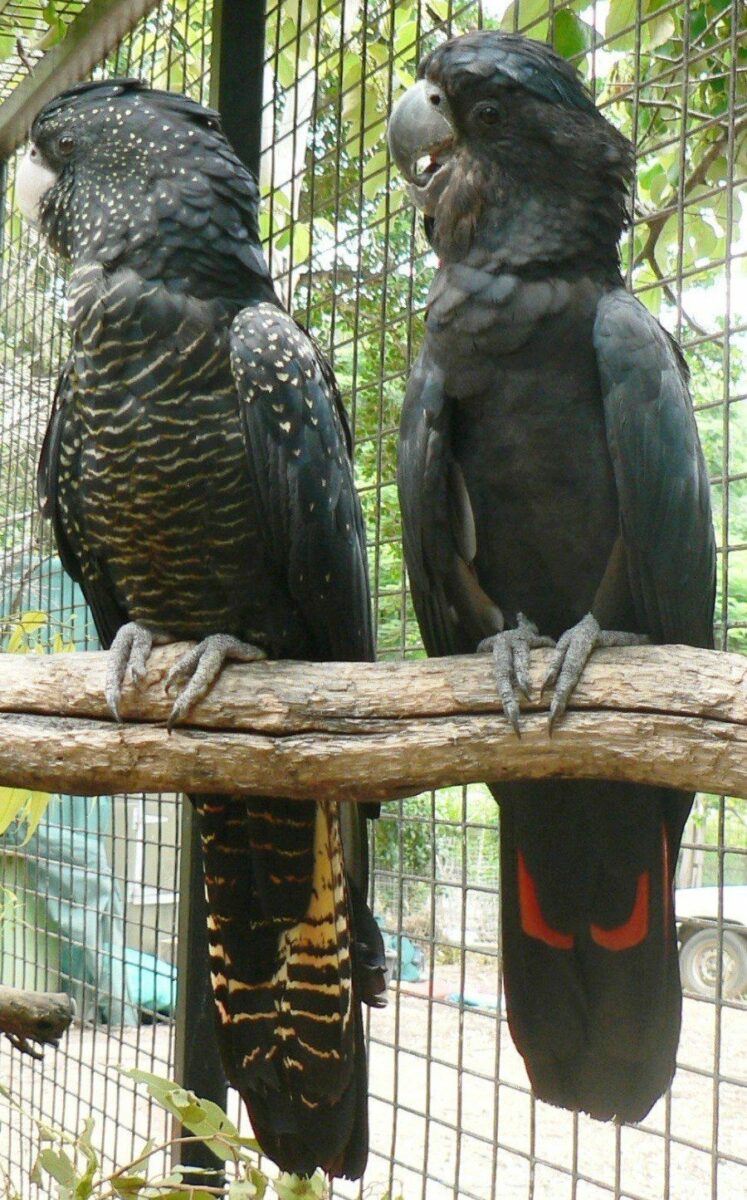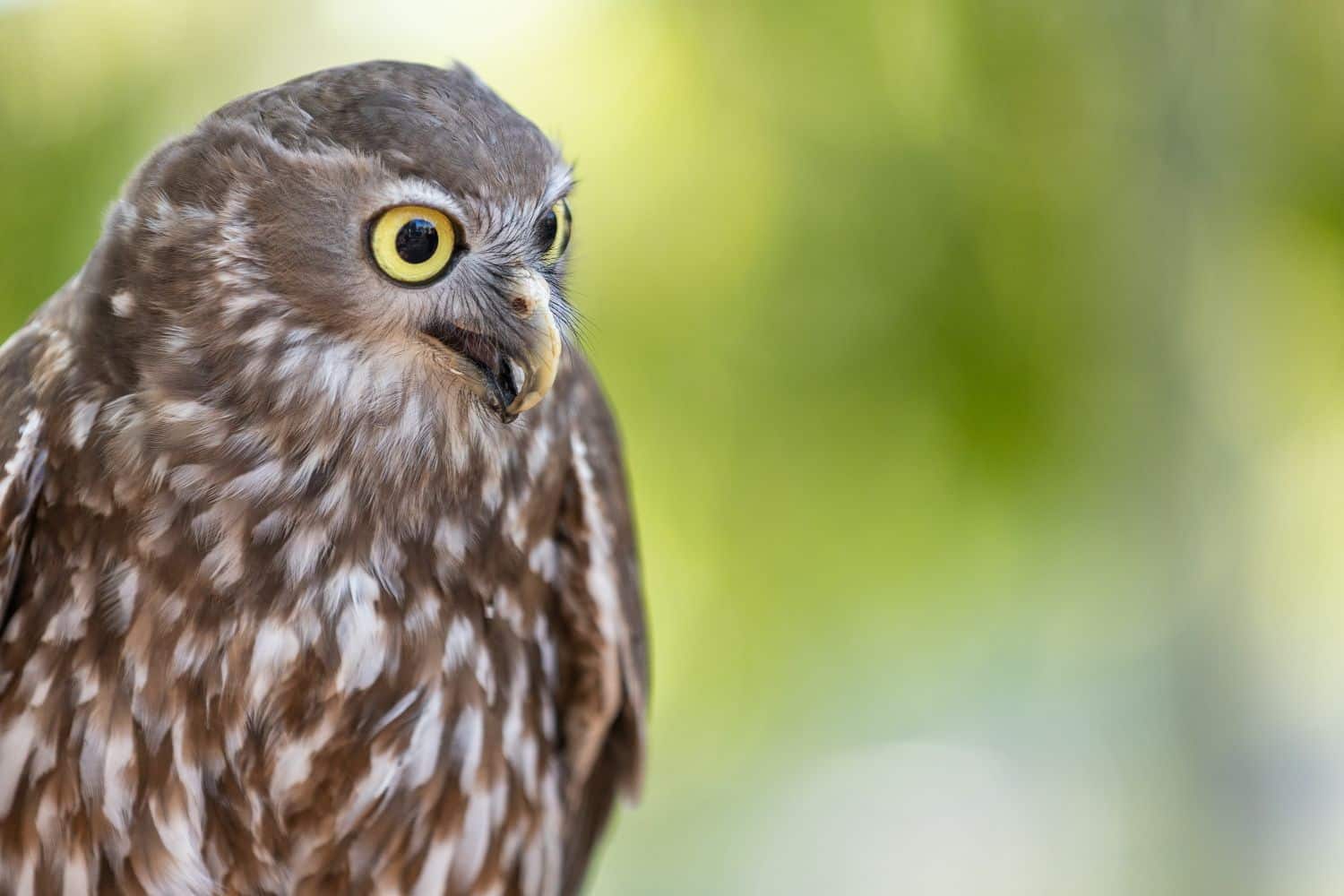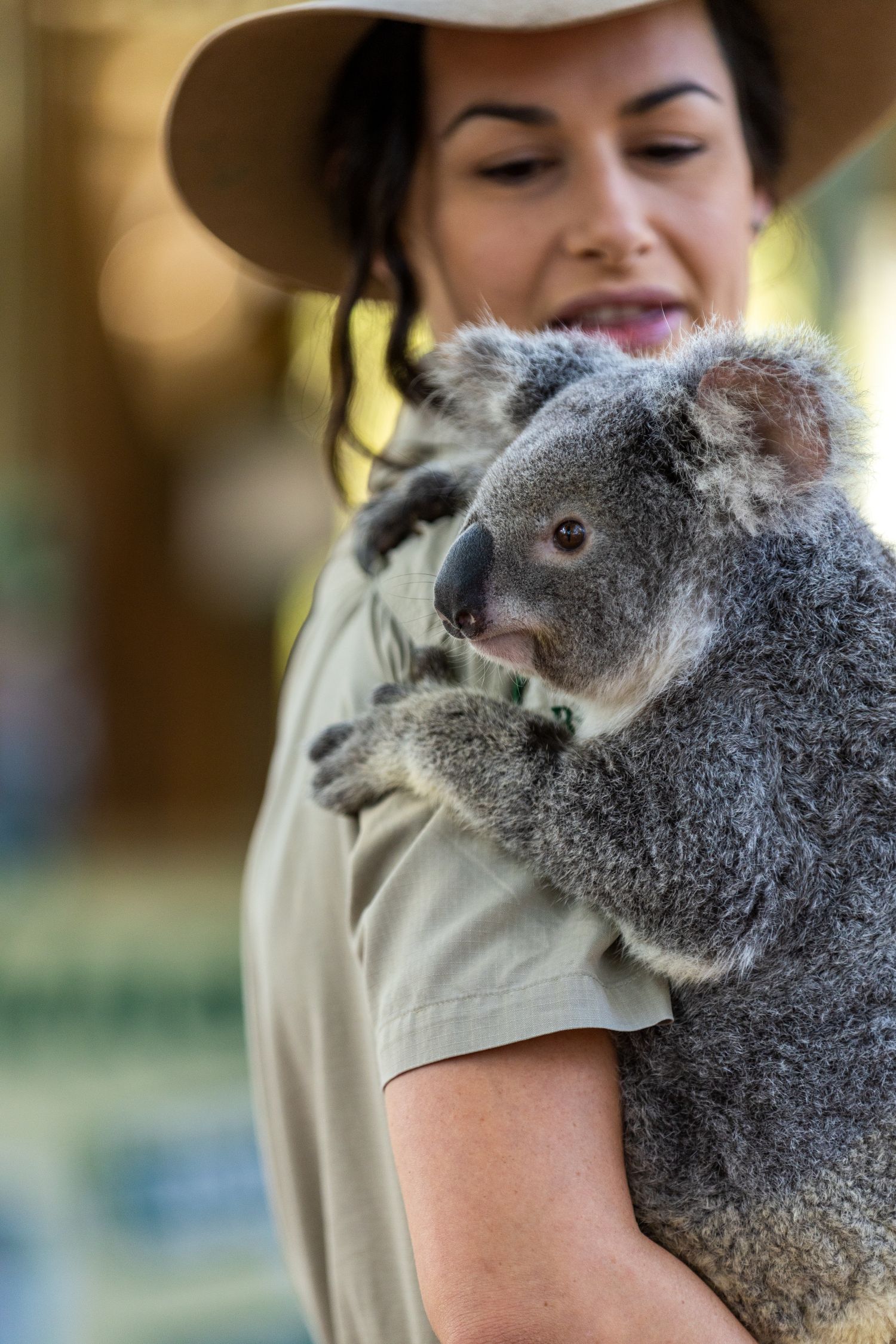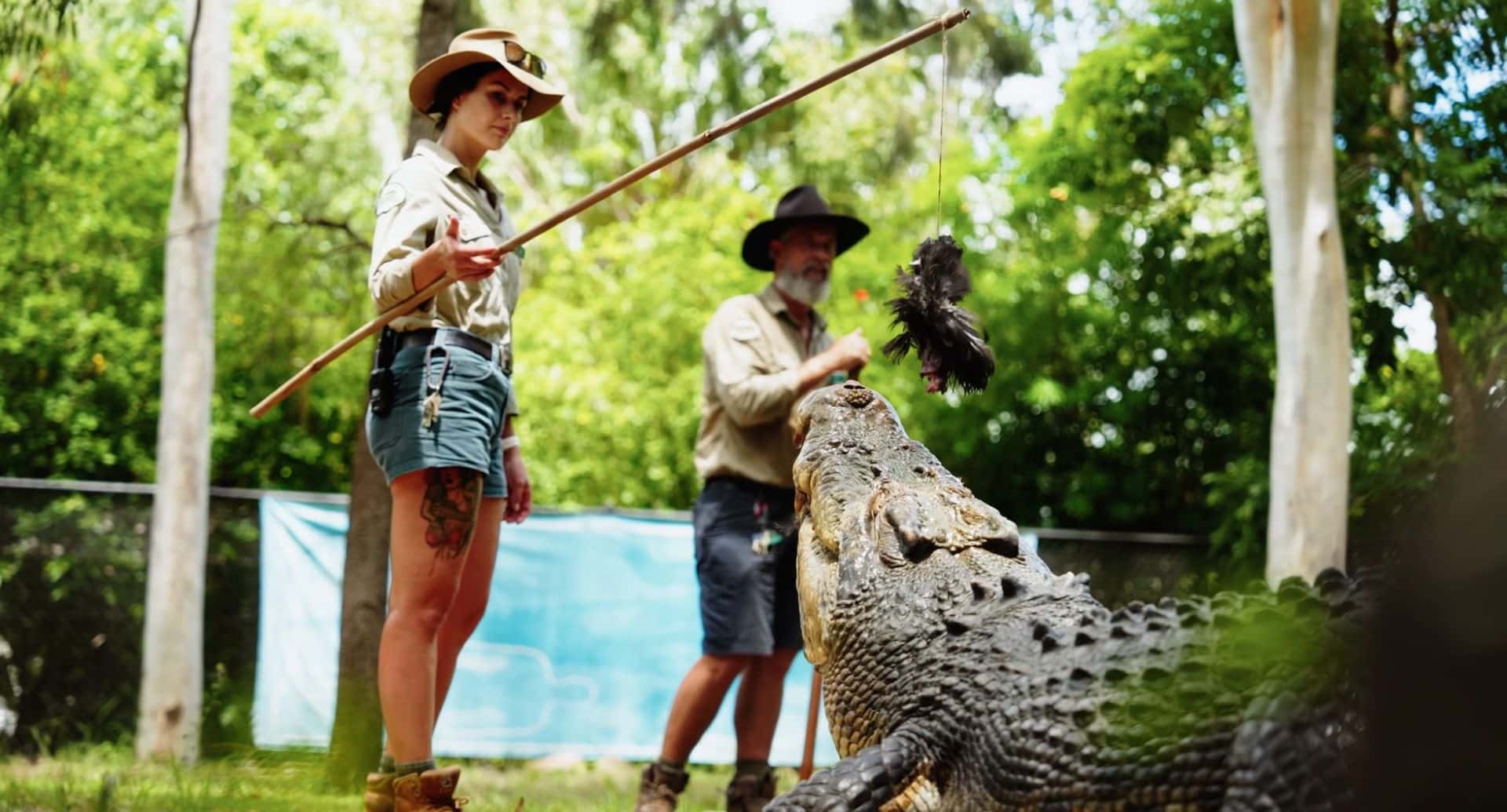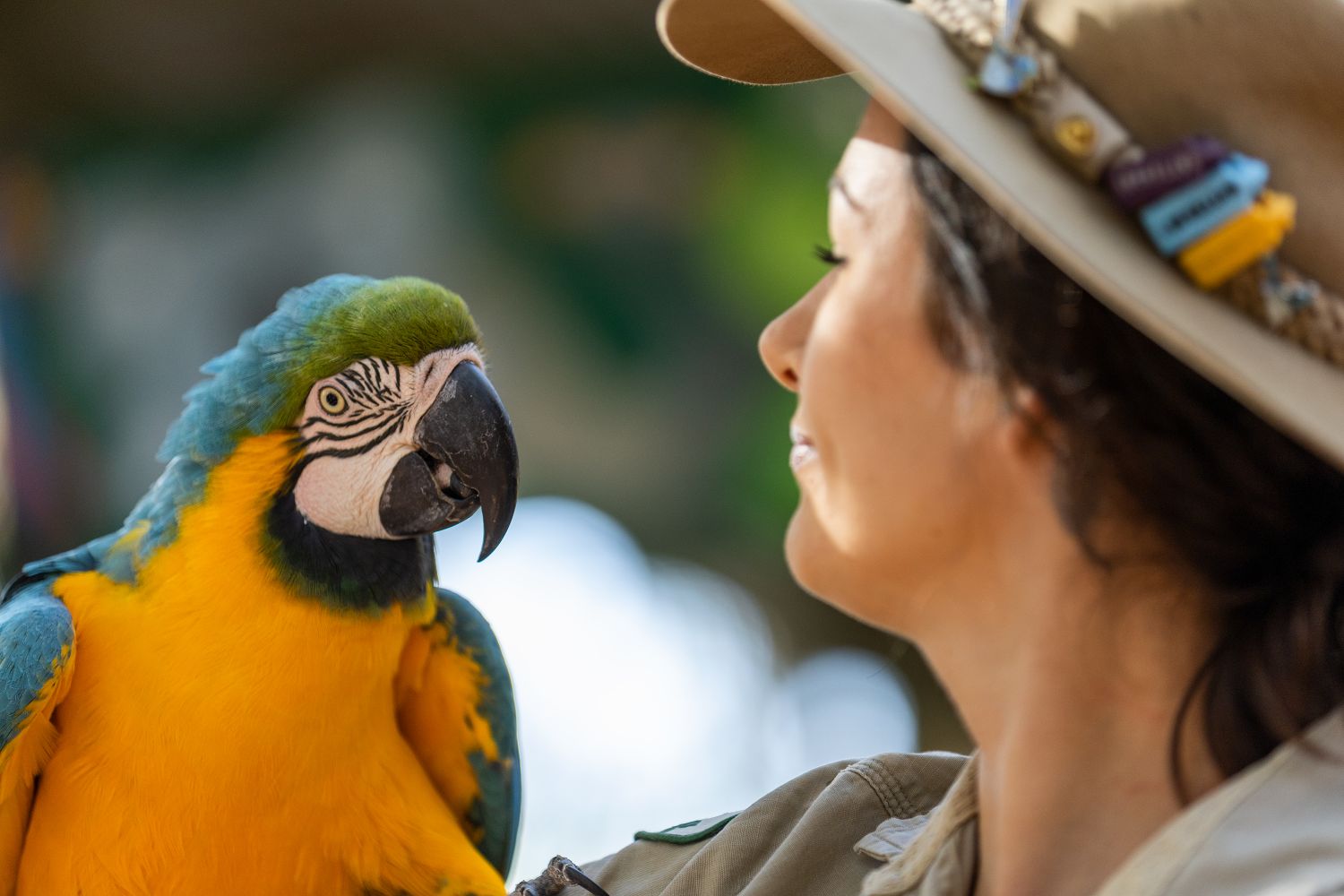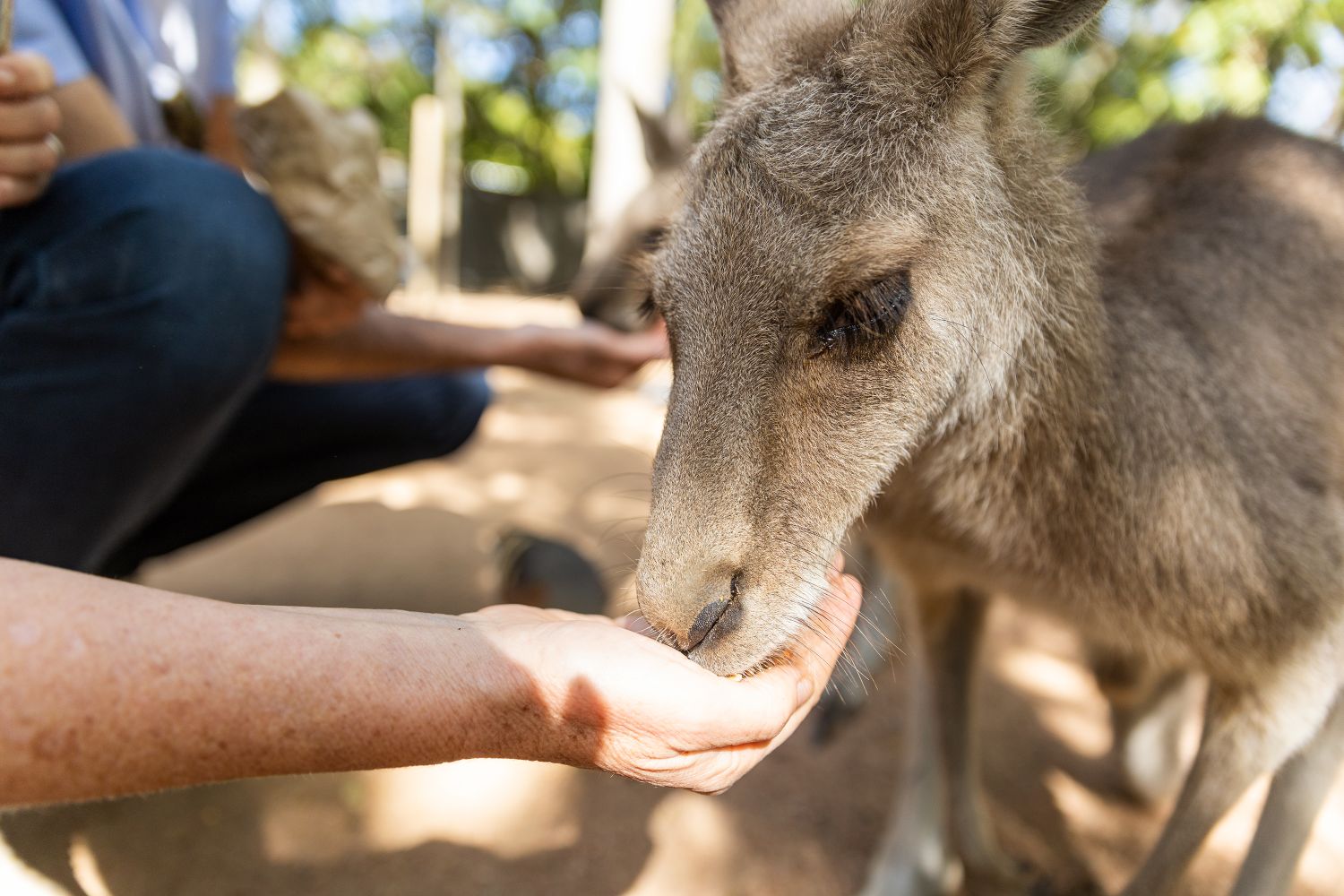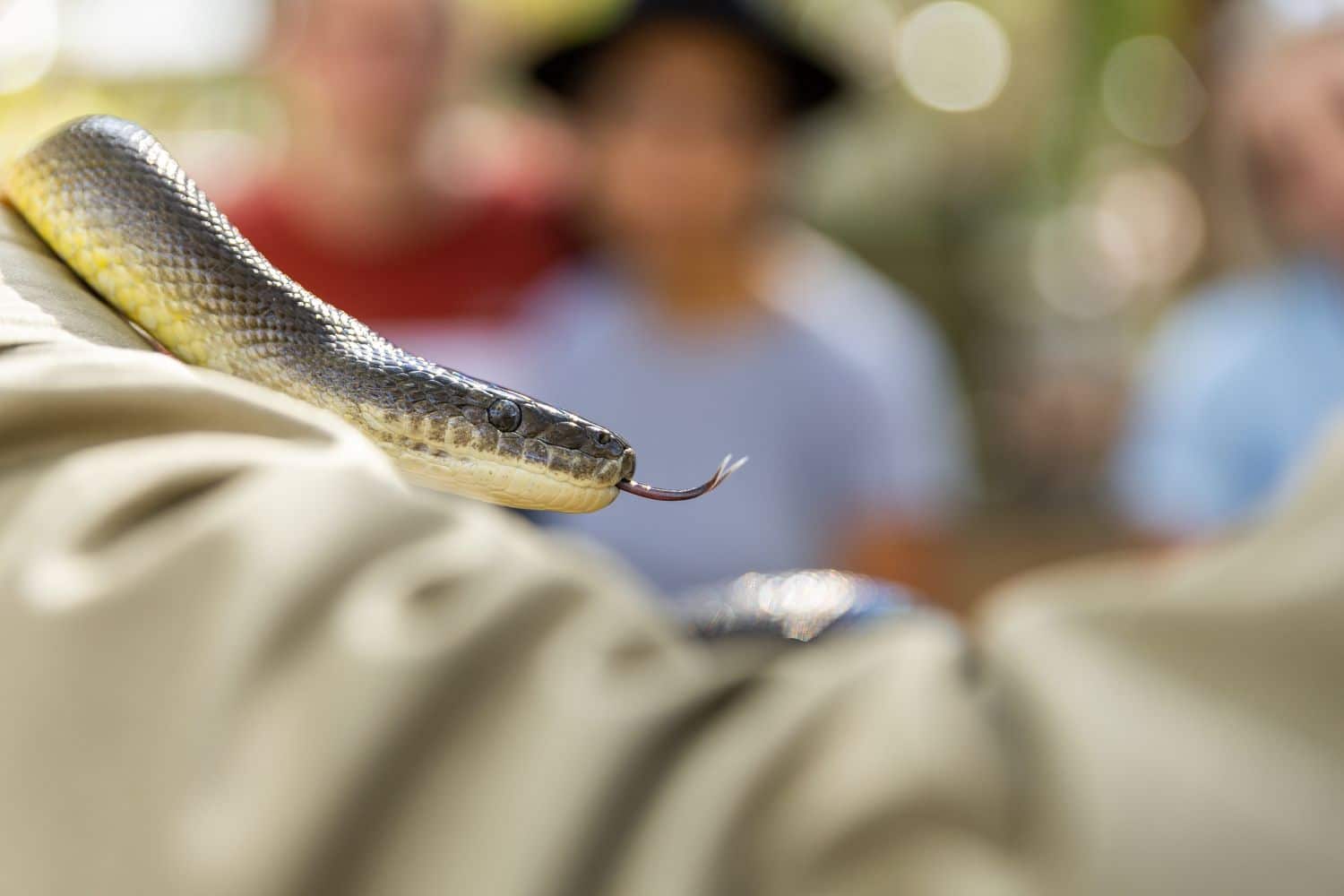You will usually hear them before you see them, calling to each other with a high-pitched guttural ‘creeee creeee’; then the flock will come rolling overhead on slow, measured wingbeats, and settle noisily high in a favourite food tree.
Here at Billabong Sanctuary we have been successfully breeding red-tailed black cockatoos since the park opened and you can meet the parents in the aviary right next to the cassowaries.
One of their offspring, Waru, is one of the stars of the afternoon interactive bird show.
WHAT’S IN A NAME?
The species name Calyptorhynchus derives from the Greek words calypto meaning ‘cover’ and rhynchos meaning ‘snout’ which roughly translate to mean ‘covered beak’. This refers to the fact the cockatoo can fluff up the feathers around its beak until it is nearly hidden. The genus name banksii honours Joseph Banks, a botanist with Captain Cook. Thus, the scientific name means ‘Banks’ hidden beak’.
Within the larger grouping of birds of the order Psittaciformes, which includes all the parrots, cockatoos form a distinct family. Two noticeable features that differentiate them from other parrots are the crest on top of the head and the lack of any blue or green colouring in their feathers.
WHAT DO THEY LOOK LIKE?
Red-tailed black cockatoos are easily recognisable.
The male is jet black, with a broad band of bright red in his tail and a dark grey beak.
The female is duller black, with yellow speckles on the head and breast, and yellow patches in her tail. Her beak is whitish in colour.
Immature birds resemble the female.
This bird is also huge – one of our largest parrots. An adult is over 60cm long (24 in) from head to tail!
WHERE ARE THEY FOUND?
There are actually four subspecies of the Red-tailed Black Cockatoo, found in different parts of Australia.
They differ in size as well as in their food preferences.
Here in North Queensland is the largest sub-species, Calyptorhynchus banksii macrorhynchus. It is found across northern Australia from the Kimberleys in Western Australia, all around the north coast down to northeastern New South Wales.
A smaller, large-beaked subspecies, the Forest Red-tailed Black Cockatoo, C. banksii naso is found in jarrah forests of southwestern Western Australia.
A small race with small beaks and dull-coloured females, C. banksii samuelli, the Inland subspecies, lives in the wheat belt of Western Australia and gum-lined river systems of inland Australia east to the Darling River.
The fourth subspecies is small, with small beaks and brightly coloured females. This is the Southeastern Red-tailed Black Cockatoo, C. banksii graptogyne. It is isolated and rare, living in stringybark forests on the border between southeastern South Australia and Victoria.
None of these sub-species is found in Tasmania.
WHAT DO THEY EAT?
All red-tails eat seeds. Their particular food preferences are specific for the different subspecies.
The northern sub-species of Red-tailed Black-Cockatoo eats the widest variety of seeds, including those from trees, shrubs, grasses and mangroves. It has adapted to eating introduced species, with the seeds of Chinee Apple (Ziziphus mauritiana) being a particular favourite. It is also especially fond of sea-almond and white cedar (Melia azedarach). The birds are highly nomadic, moving about seasonally as different species of trees or shrubs produce their seeds.
The Forest Red-tail lives in the crown of eucalypt forests, feeding mainly on the large woody seeds of the marri (Eucalyptus calophylla).
The Inland red-tail feeds on proteas, casuarinas and other small trees in the Western Australian wheat belt and arid inland. It feeds on the ground, and will eat introduced species such as storksbill (Erodium), a flowering plant in the geranium family, and double-gee (Emex australis) a noxious weed originally introduced as a vegetable.
The southeastern red-tail eats the seeds of the brown stringybark (Eucalyptus baxteri) and of the buloke (Allocasuarina leuhmanni ).
Cockatoos have very strong beaks which they use to break open even very hard, woody seed capsules of gum trees. Their very mobile, muscular tongue then extracts the kernel from within the seed pod. Food items are often held in the foot, which has two toes pointing forward, and two pointing backwards (a characteristic of all parrot species).
NESTING AND RAISING THE YOUNG
During courtship, the male struts along a tree branch bowing towards the female, with his tail feathers fanned out, and his head feathers all ruffed up, giving a low, gurgling sound. Apparently, this is attractive to the female! After mating, the male feeds the female.
Nesting takes place from March to July in the Northern Territory, May to September in Queensland, and either March to April or July to October in Western Australia. The small population in Victoria/South Australia breeds from October to May.
Red-tailed Black Cockatoos nest in any trees which have nesting holes of a suitable size, usually larger than about 180mm in diameter (7 in). The holes may be located from 2m (6 1/2 ft) above the ground to as high as 30m (nearly 98 ft) in heavy karri forest in Western Australia.
The parrots chew the inside of the nest hole to make a layer of wood chips on the floor. The female lays only one (rarely two) oval, white egg. For two or three weeks she will brood the egg day and night, while the male brings her food. After that, she will sit only at night, for a further week or so till the egg hatches.
The hatchling soon becomes covered with dense yellow downy feathers.
Both parents feed the young, in the morning and the evening, entering the nest hollow tail-first. They grasp the beak of the young, and pump partially digested seeds from their own crops into the baby’s beak.
The young bird is fledged in about 10 to 12 weeks. It will remain with its parents long after it has learned to fly, begging for food with a whispery, high-pitched whine. Even large birds will be fed regurgitated food by their parents. Young birds reach maturity in about 4 years.
Red-tailed Black Cockatoos may live for about 20 years in the wild, and much longer in captivity.
STATUS IN THE WILD
The Northern subspecies of Red-tailed Black Cockatoo has a wide distribution and is not considered endangered. In the Northern Territory alone, it is estimated there are about 60,000 birds.
In Western Australia, the Inland Red-tail is increasing its distribution, mainly because of the abundance of the introduced double gee-weed.
The Forest Red-tails may be under some threat from loss of habitat and poaching of eggs or chicks from the nest. They depend on large, old trees for nesting hollows of suitable size. The largest Marri trees have been cut down preferentially for wood-chipping, but this practice was to stop from 2003.
The Perth Zoo is coordinating a captive breeding programme to help increase numbers of the Forest Red-tailed Black Cockatoo. They have the only verified breeding pair in the world.
The Southeastern subspecies is considered to be endangered. In 2001 the population was estimated at only 650-1000 birds total, including 500-770 adult birds.
There is a comprehensive Recovery Plan in place, sponsored by Birds Australia, local and state governments, university staff and concerned citizens.
The main emphasis of the project is to increase the number of birds in the wild by improving the available habitat. This means managing existing stands of stringybark and buloke by restricting fires and access by livestock, as well as planting new trees in suitable areas.
Here at Billabong Sanctuary we hope our resident Red-tailed Black Cockatoos will continue to breed successfully, so that we may do our part in helping to preserve populations of this magnificent bird.
